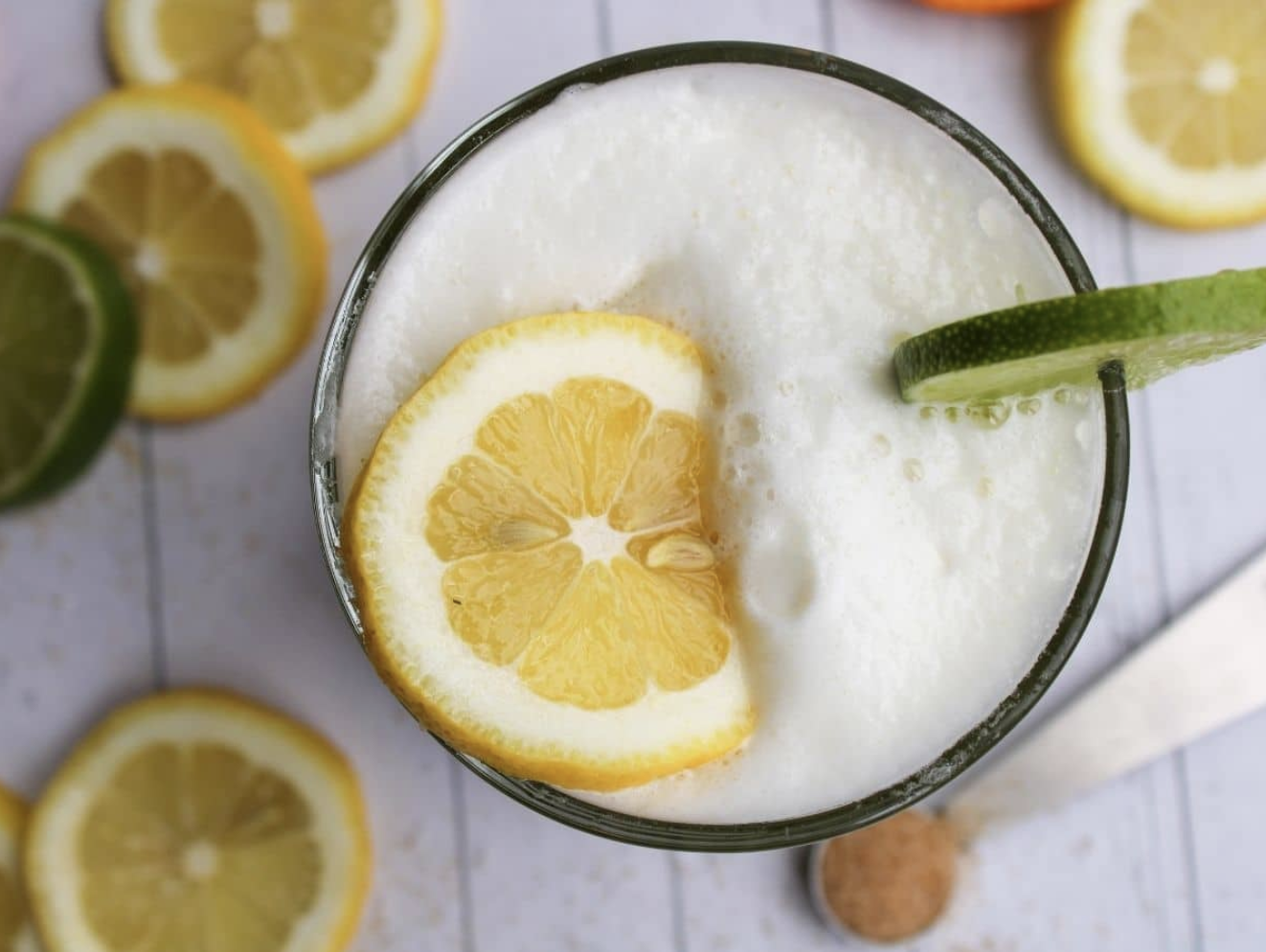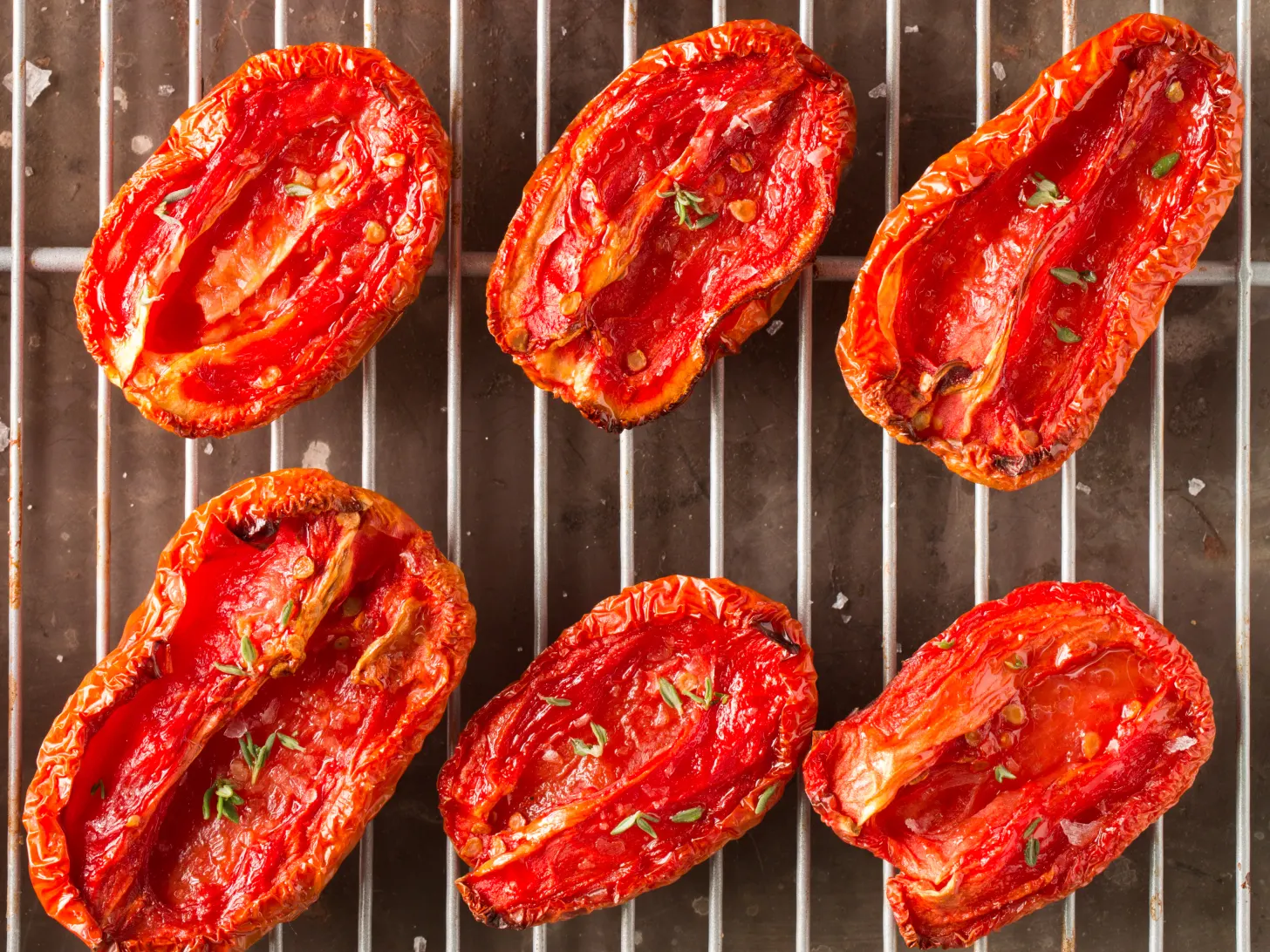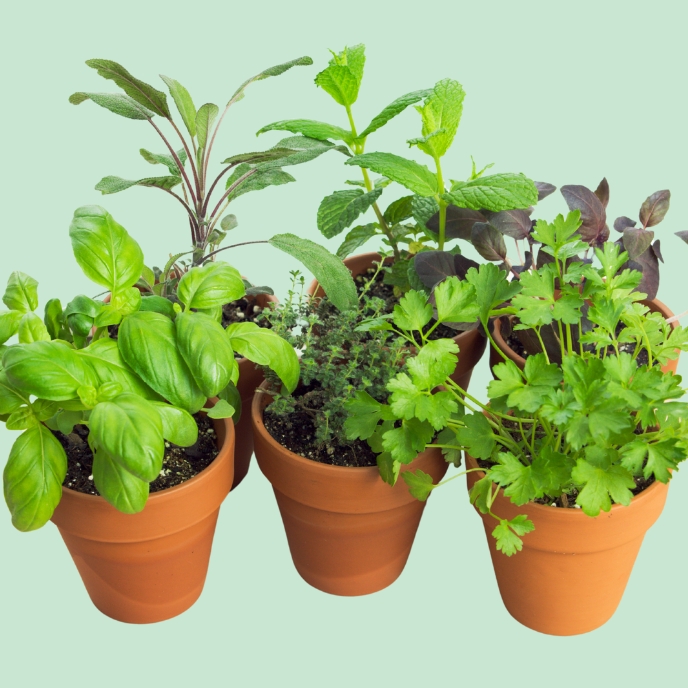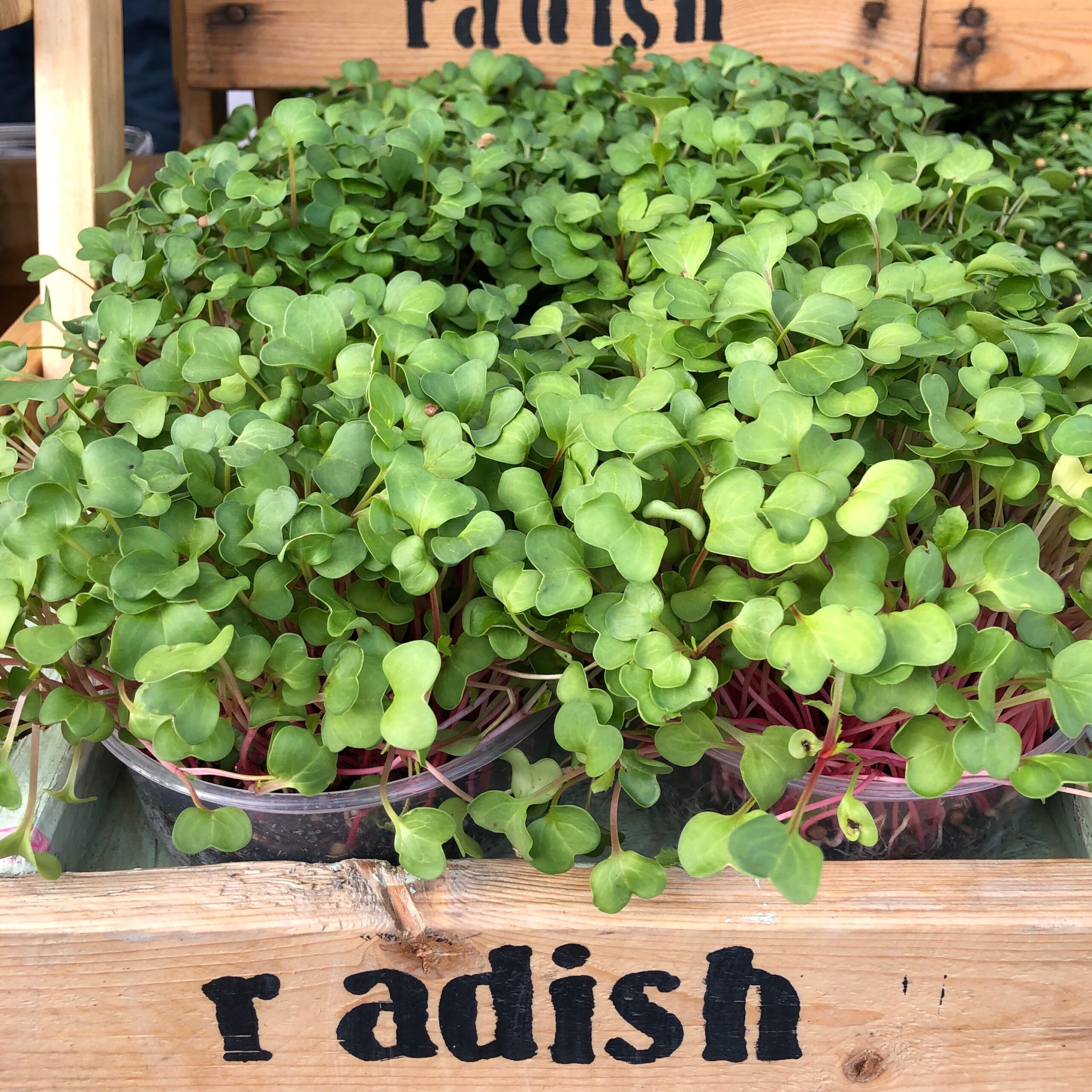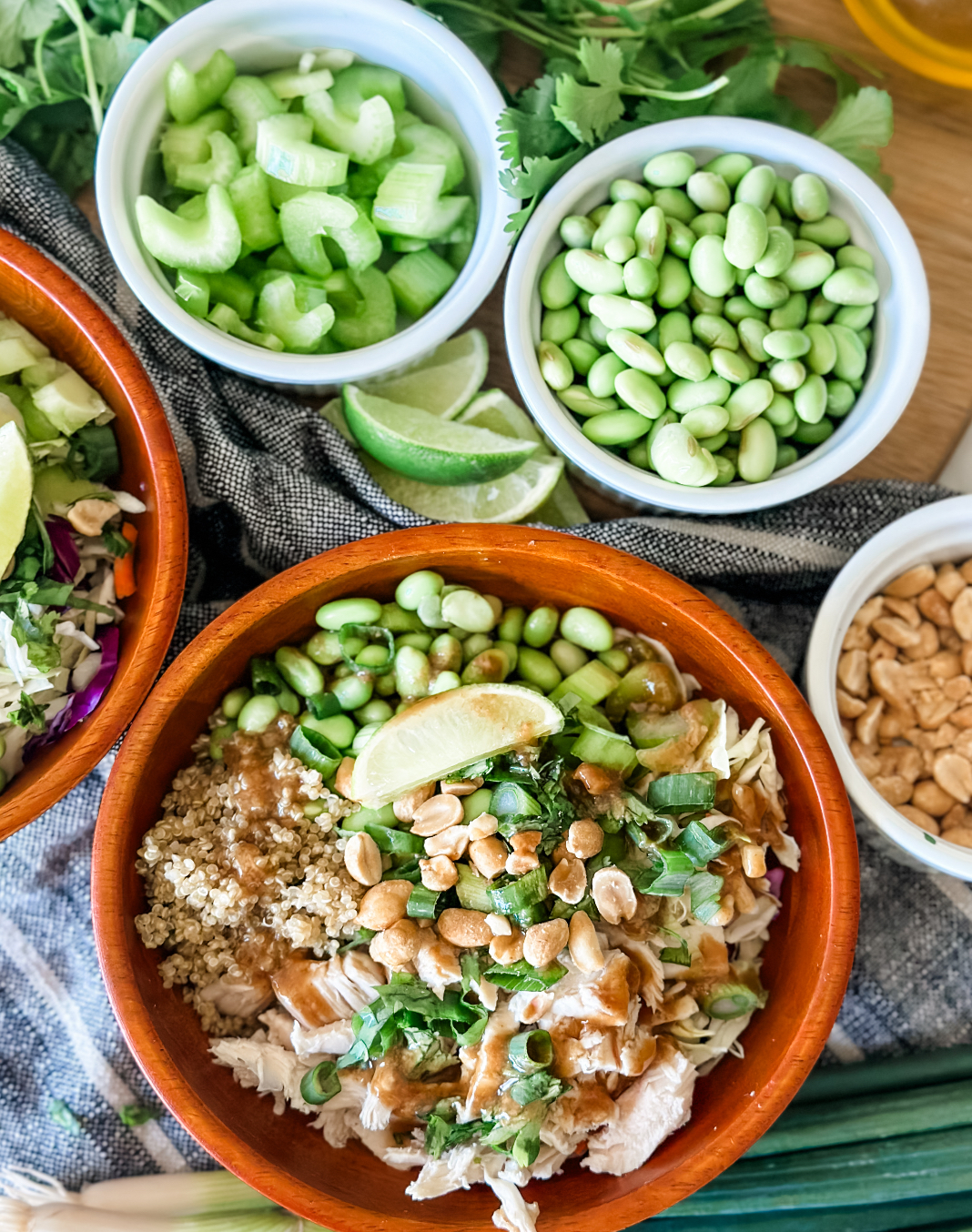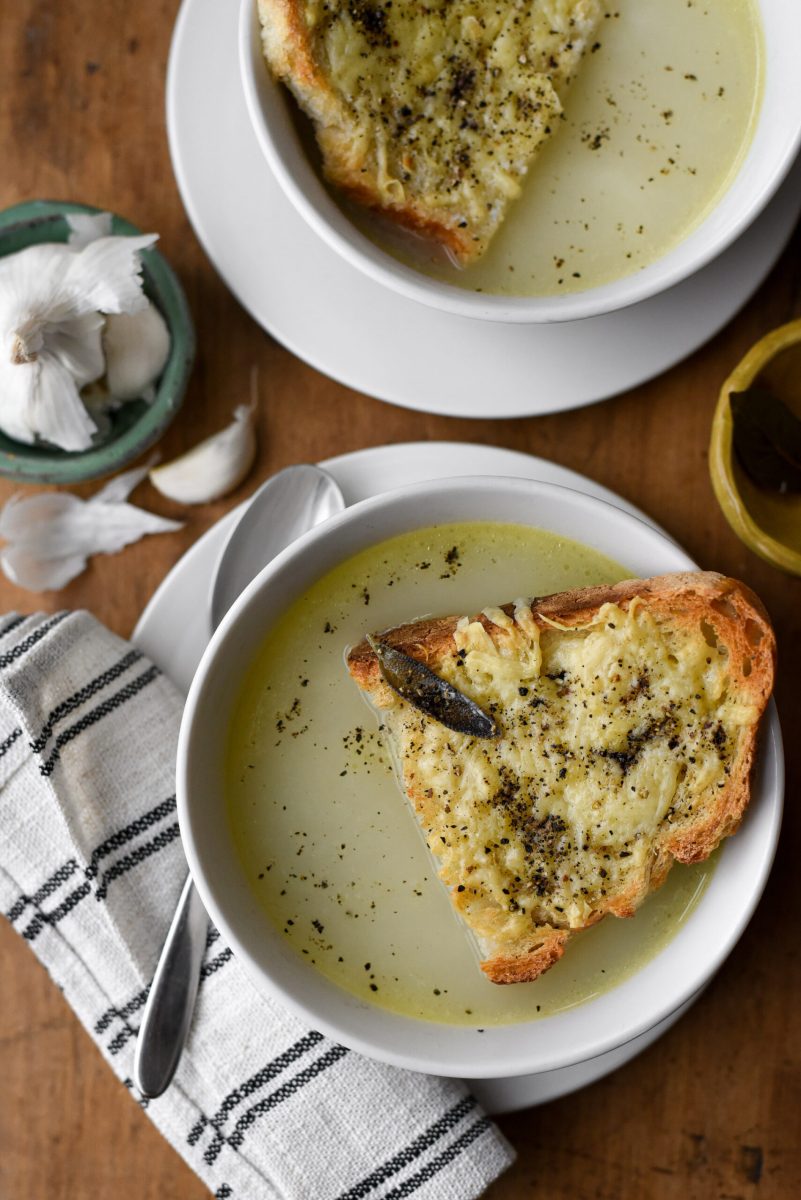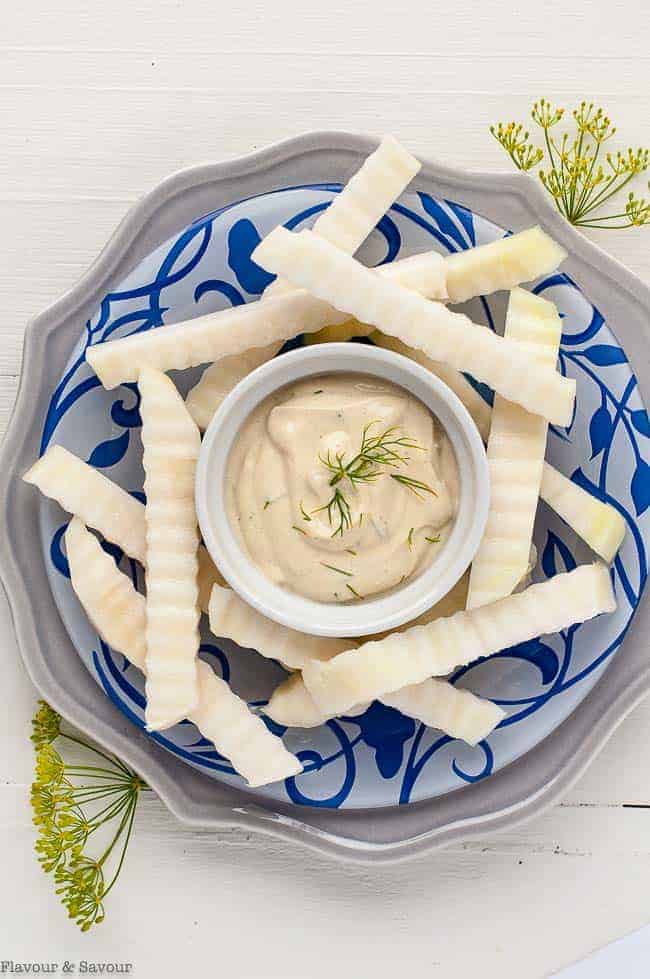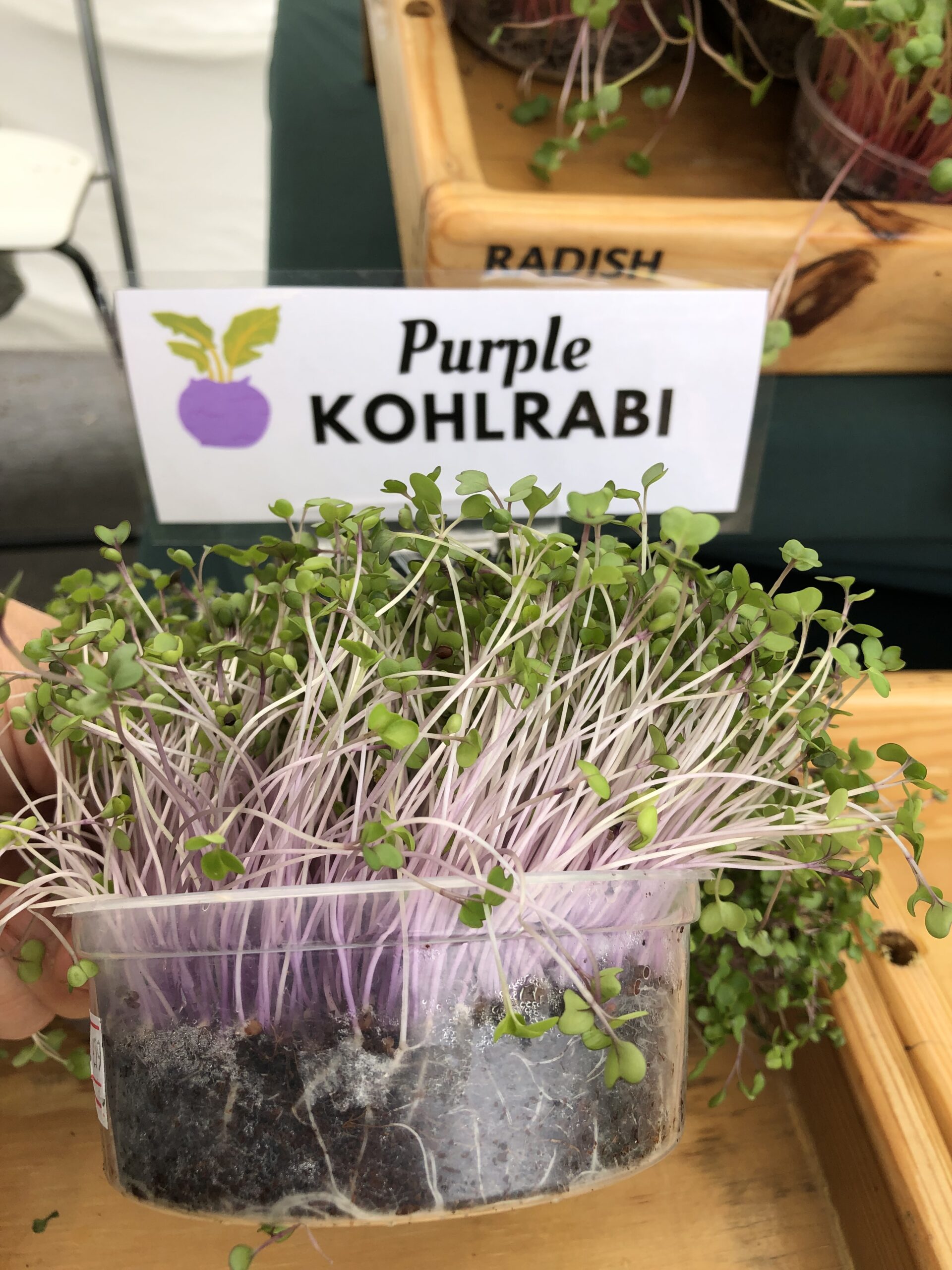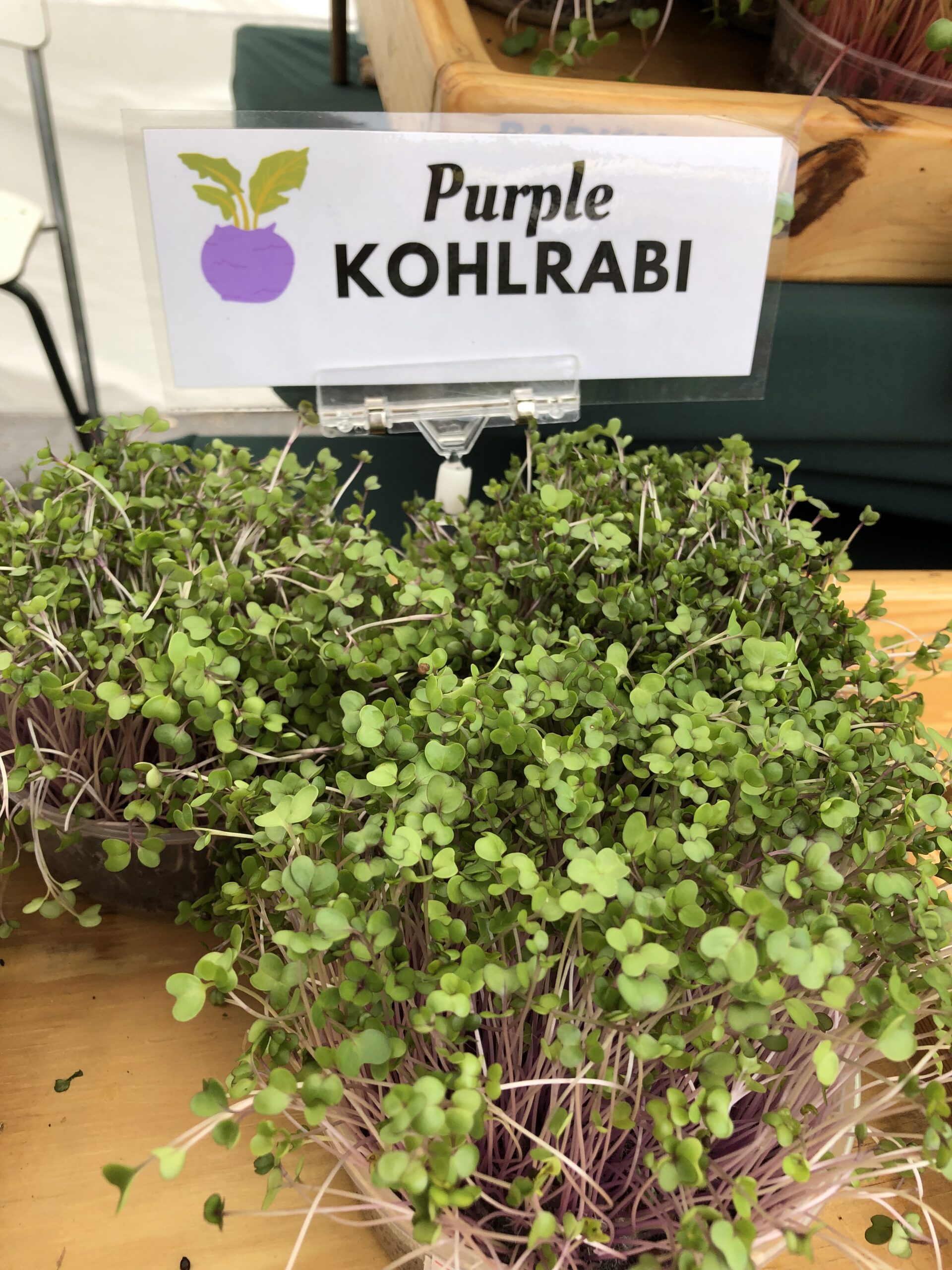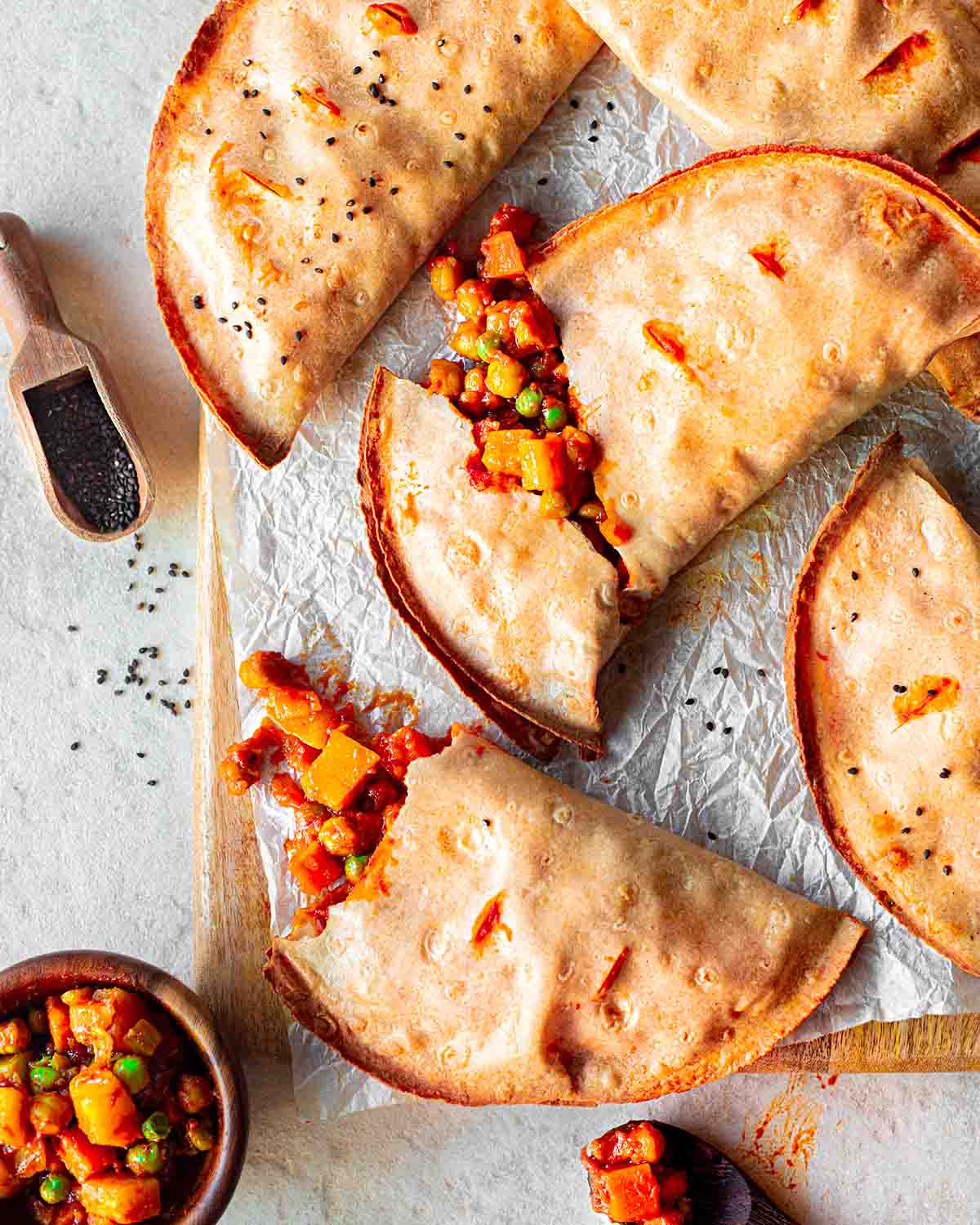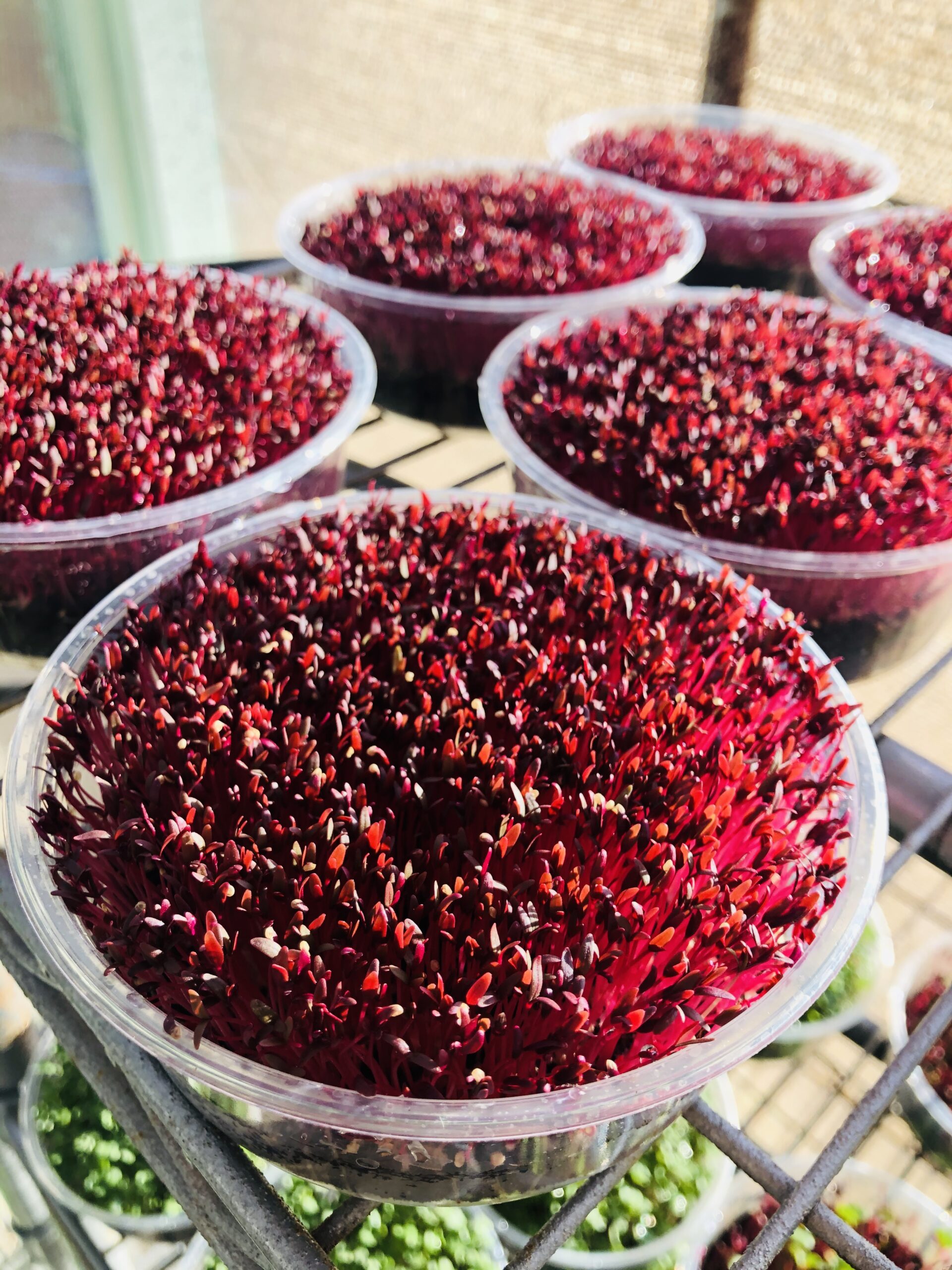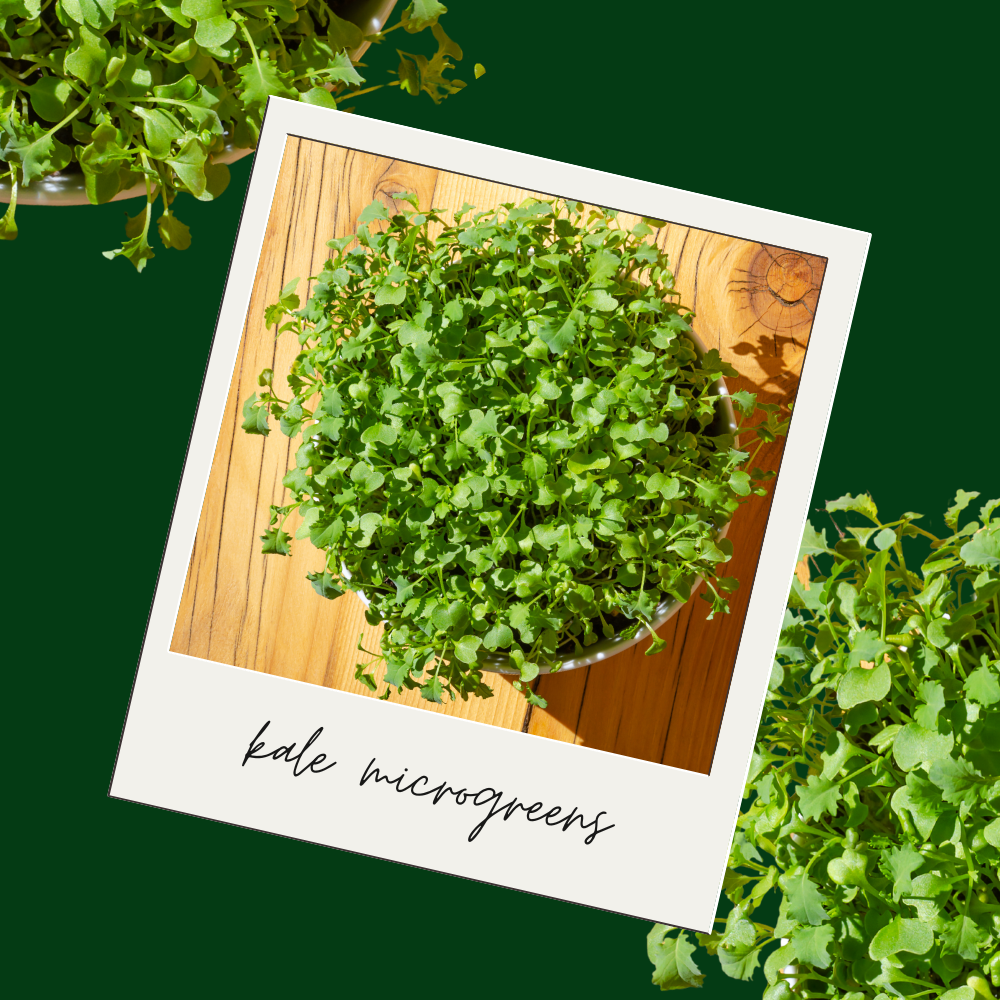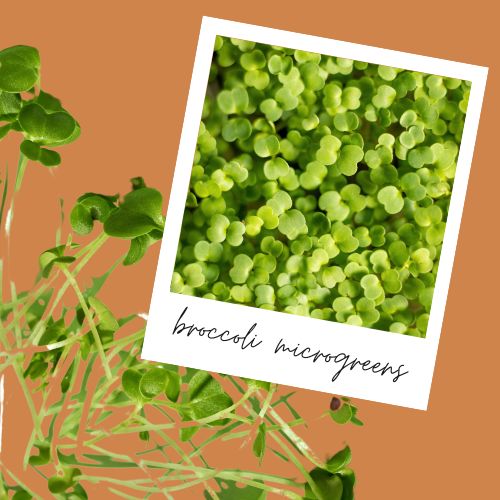
What Are Microgreens?
Tiny, vibrant, and packed with flavor, microgreens are young edible plants. Microgreens are famous for their concentrated flavors and nutrition profile. Relatively new to the culinary scene, microgreens themselves are not modern or new, they are simply new to us. That is because microgreens are essentially just seedlings.
Microgreens are vegetable, herb, or fruit seedlings that are consumed when only 1-4 leaves have emerged from the tiny plant. It was discovered that at the seedling (or microgreen) stage, many common vegetable and herb plants are packed with flavor and are much more nutritious than if they were full grown plants.
What Are Broccoli Microgreens?
Broccoli microgreens are the seedlings of regular broccoli plants. Broccoli seedlings become broccoli microgreens, when they are planted and produced to maximize the flavor and nutrient value, and harvested in just a couple of weeks. Looking for directions to grow your own at home? Use my step by step growing guide and check out my master list of microgreen growing tools and seeds.
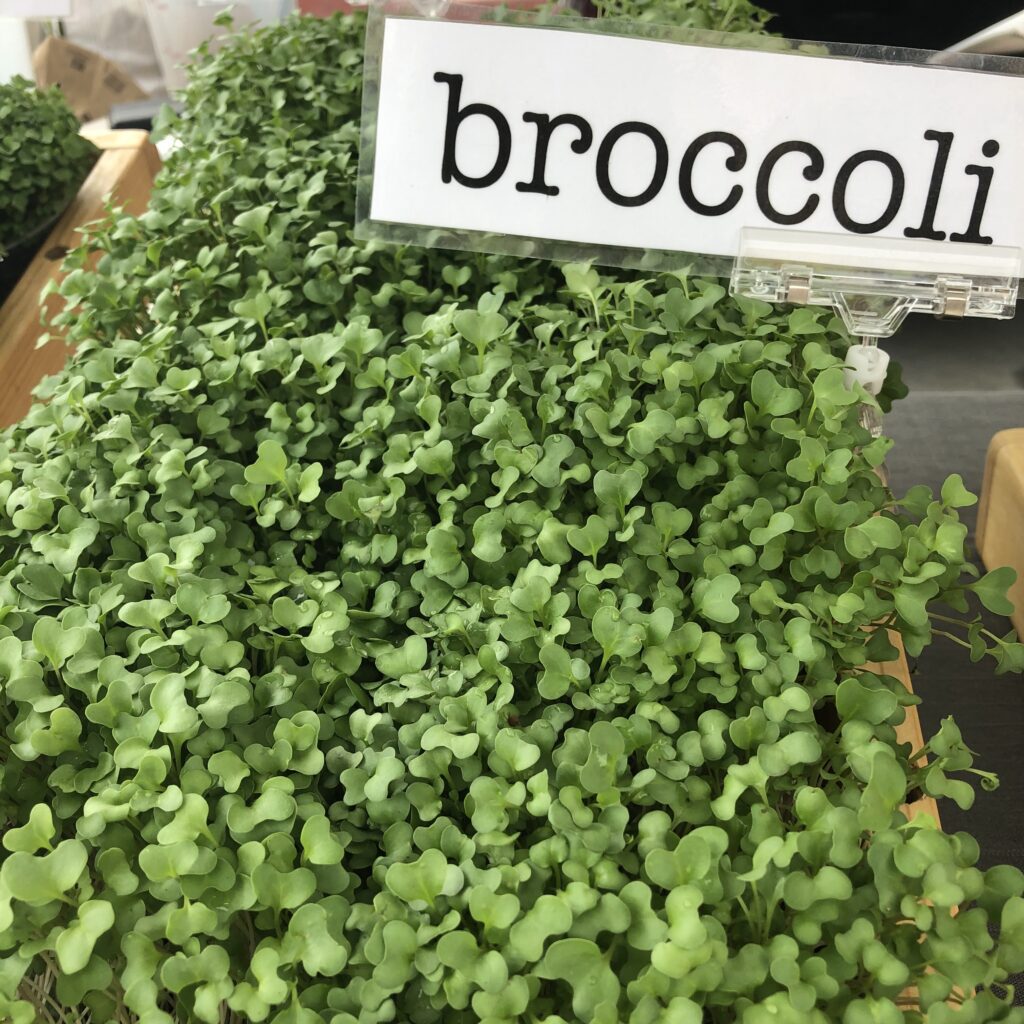
Broccoli microgreens are also called Micro Broccoli. All broccoli varieties can be grown as microgreens. Popular varieties are Waltham 29, Calabrese, and sprouting broccoli.
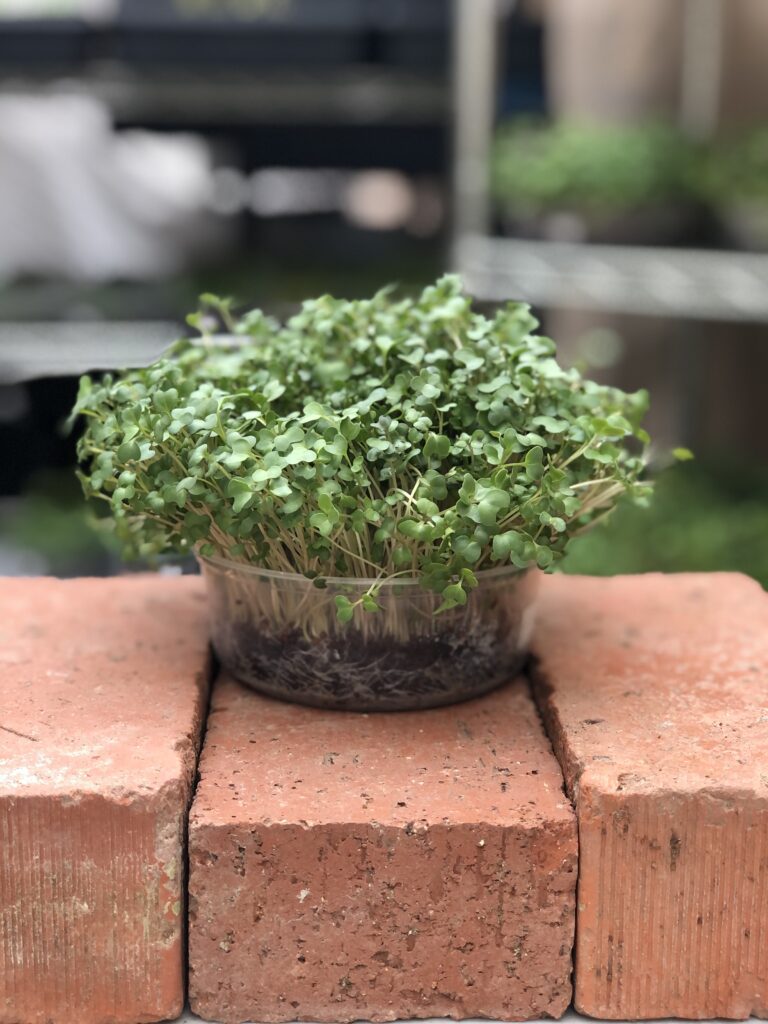
Are Broccoli Microgreens the Same as Broccoli Sprouts?
No, but this is a confusing question because a sprout is different from culinary Sprouts. When I say Sprouts, I am referring to the culinary food, which are edible sprouted seeds.
“To sprout” is a verb (referring to beginning to grow) and a “sprout” is a noun (meaning the plant that has just emerged from a seed and beginning to grow). However, when referring to culinary “Sprouts” we are talking about edible plant seeds that have been sprouted (just beginning to grow) in water for consumption of the roots, stem, and immature leaves. So culinary Sprouts are very young seedlings grown in water in which the roots, stem (if any), and leaves (if any) are consumed. Sprouts are grown in the dark and the entire sprout is consumed (nothing is harvested).
Microgreens are also very young seedlings, but microgreens are older than culinary sprouts. Microgreens are often grown on a medium (I will call it soil, but it is not technically soil). Microgreen roots plunge downward into the soil, and a stem grows upwards. Microgreens are grown in light. Microgreens are harvested, meaning the stems are cut away from the roots. Microgreen roots are not consumed.
While broccoli sprouts and broccoli microgreens are the same plant, the growing methods are different, the taste is different, the texture is different, and they look different from one another. The nutrition profile is also different. Broccoli Microgreens are older than Broccoli Sprouts. In my opinion, Micro Broccoli is a delight to consume with a lovely tender/crisp texture, visually interesting, and a lovely broccoli flavor. Broccoli Sprouts are stringy and tangled with a less appealing mouthfeel. The sprouts can have an overwhelming funky broccoli flavor.
Read my post about the differences between sprouts and microgreens here.
How To Use Broccoli Microgreens?
Microgreens are usually consumed raw and can be used as a garnish (a few stems atop a meal) or the main attraction of a dish. Broccoli Microgreens are extremely versatile. Nearly any dish, sandwich, wrap, and soup can benefit from a handful of micro broccoli on top just before consuming.

Are Broccoli Microgreens Healthy?
Micro Broccoli is a nutritionist’s dream. In my first few years growing and selling microgreens at farmer’s markets, broccoli microgreens were the most popular variety because of their reputation as incredibly nutrient dense.
Broccoli microgreens are a rich source of nutrients, including vitamins A, C, and K, as well as minerals like calcium and iron. Just half an ounce of broccoli microgreens will satisfy 15% of your daily need for vitamin C (see this study for mire info.) Additionally, they contain phytochemicals, which are plant compounds that have potential health benefits.
Broccoli microgreens are particularly high in glucosinolates, compounds that have been linked to various health benefits, such as cancer prevention and improved heart health. Glucosinolates are linked to creation of sulforaphane in our bodies. Sulforaphane glucosinolate is a phytochemical that is produced when the enzyme myrosinase breaks down glucoraphanin, a glucosinolate found in Micro Broccoli. Sulforaphane is a sulfur-containing organic compound that is known for its antioxidant, antimicrobial, and anti-inflammatory properties. You can even buy dehydrated broccoli sprout powder to take advantage of all the health benefits and add it to smoothies, dressings and dips.
The Science: Studies on Broccoli Microgreens
Unless you’ve earned a degree in nutrition and food biology and farming, it is truly dizzying to decipher journal articles about microgreens. Yes, microgreens studies are published all the time, by scholars all over the globe. Results are very consistent regarding the considerable amounts of phytochemicals present in microgreens and their overall contribution to healthful eating. But the details vary greatly between studies. The variation is probably due to the considerable number of species available and the differences in farming and storage methods.
That being said, there is still value in understanding results of individual studies. So, here is a takeaway from Microgreens of Brassicaceae: Genetic diversity of phytochemical concentrations and antioxidant capacity LWT Food Science and Technology V. 101, March 2019: Compared to their more mature vegetable counterparts reported in previous studies, Brassicaceae microgreens were generally packed with higher amount of total phenolics, such as broccoli (282.8 mg GAE/100 g FW vs 63.4–87.5 mg GAE/100 g FW), green cabbage (272.4 mg GAE/100 g FW vs 92.5 mg GAE/100 g FW), and turnip (159.7 mg GAE/100 g FW vs 12.0 mg GAE/100 g FW)*.
According to this 2017 study about Broccoli Microgreens, comparing three different methods for growing micro broccoli: “Regardless of how they were grown, microgreens had larger quantities of Mg, Mn, Cu, and Zn than the vegetable. However, compost-grown (C) microgreens had higher P, K, Mg, Mn, Zn, Fe, Ca, Na, and Cu concentrations than the vegetable. For eight nutritionally important minerals (P, K, Ca, Mg, Mn, Fe, Zn, and Na), the average C microgreen: vegetable nutrient ratio was 1.73. Extrapolation from experimental data presented here indicates that broccoli microgreens would require 158–236 times less water than it does to grow a nutritionally equivalent amount of mature vegetable in the fields of California’s Central Valley in 93–95% less time and without the need for fertilizer, pesticides, or energy-demanding transport from farm to table.” Here’s another pivotal study demonstrating the nutrient value of broccoli and other microgreens.
What Do Broccoli Microgreens Taste Like?
Broccoli microgreens are mild and earthy and taste very similar to broccoli florets.
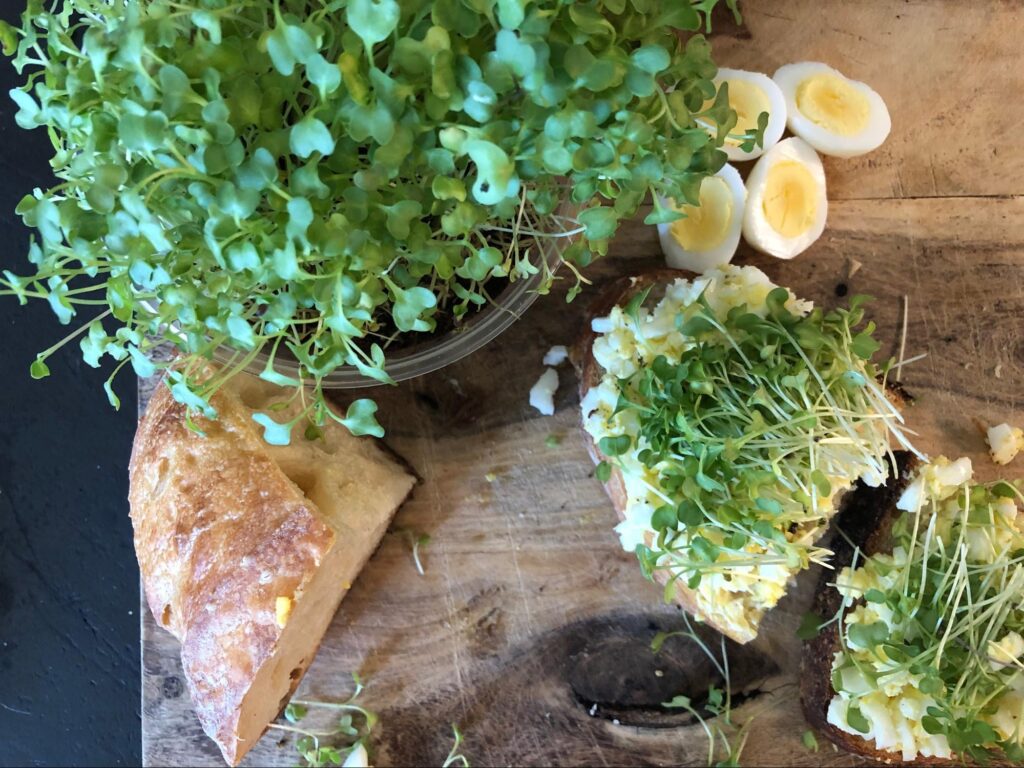
What’s the Best Way to Eat Broccoli Microgreens?
They are the best when raw and just harvested (cut.)
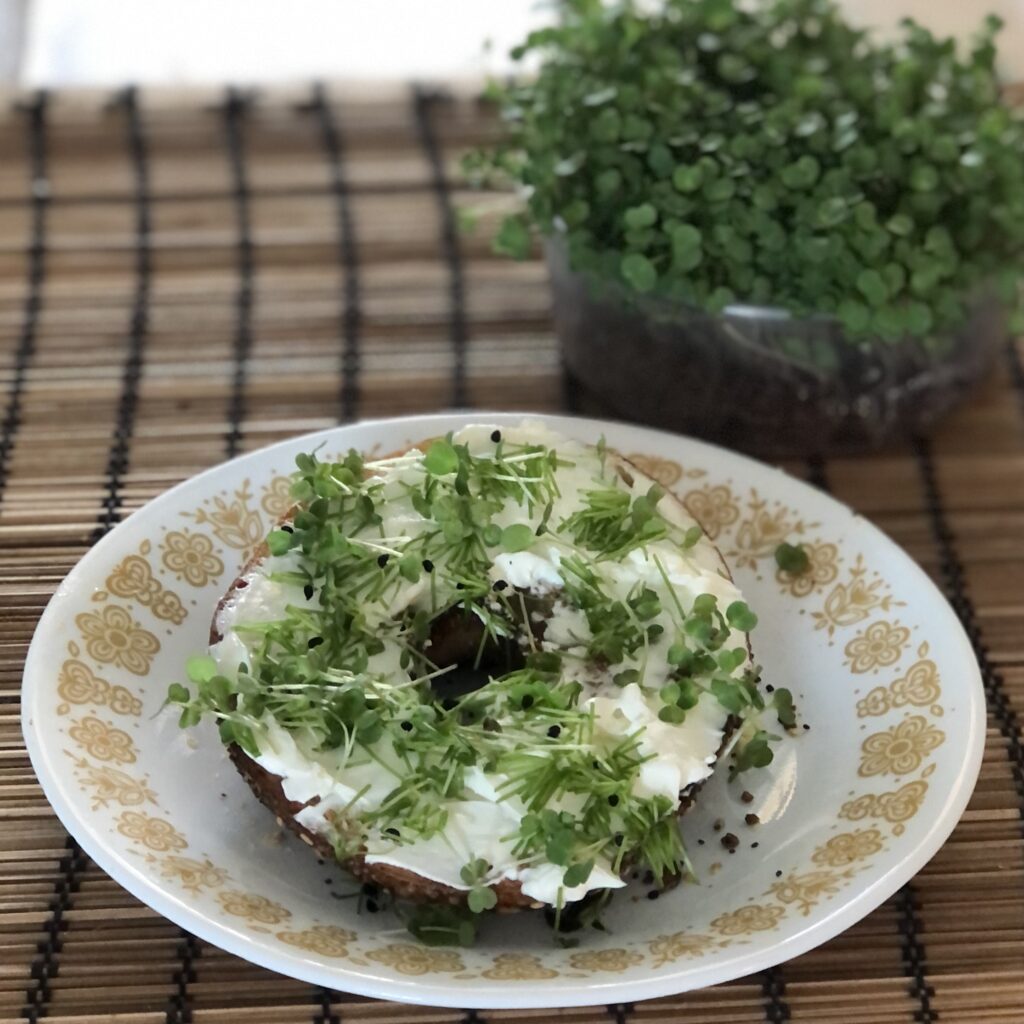
Some people are adamant that microgreens should never be cooked. I disagree. Some microgreens can be cooked, but because microgreens are so tender and small, they can become lost and mushy very quickly. They also lose some nutrient value when cooked.
When I fry an egg, I like to sprinkle Micro Broccoli on the egg just before I flip it over. The brief cooking adds to the flavor of the egg, and I prefer the texture. It is really your choice. If you have an abundance of microgreens, feel free to cook them.
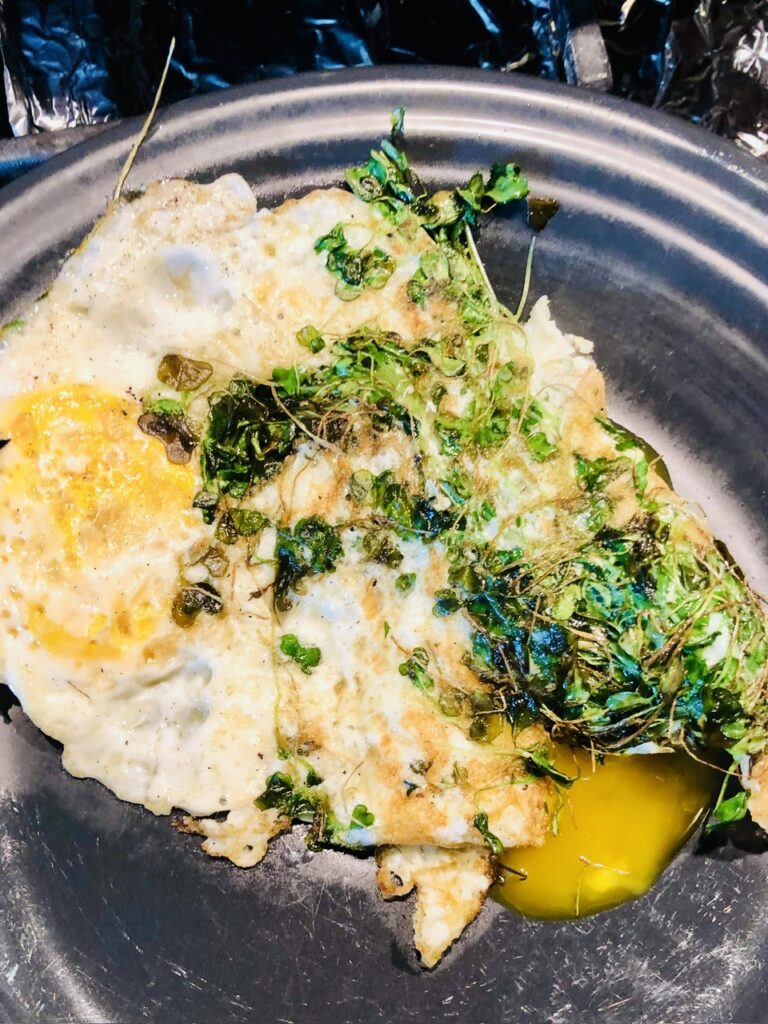
How Long Do Broccoli Microgreens Last?
It depends on whether you have packaged or living broccoli microgreens.
Still Living
If you are lucky enough to have broccoli microgreens still growing (i.e. not cut and packaged), you will have about a week to two weeks to use them (depending on how “mature” the microgreens were when you got them). Once the third leaf begins to show, eat them within a couple of days.
Packaged
The shelf-life of broccoli microgreens is not long. Harvested (already cut) micro broccoli must be fully dried before stored in the refrigerator. Use an airtight container with a paper towel to absorb moisture. Store in a rigid container to avoid crushing or bruising.
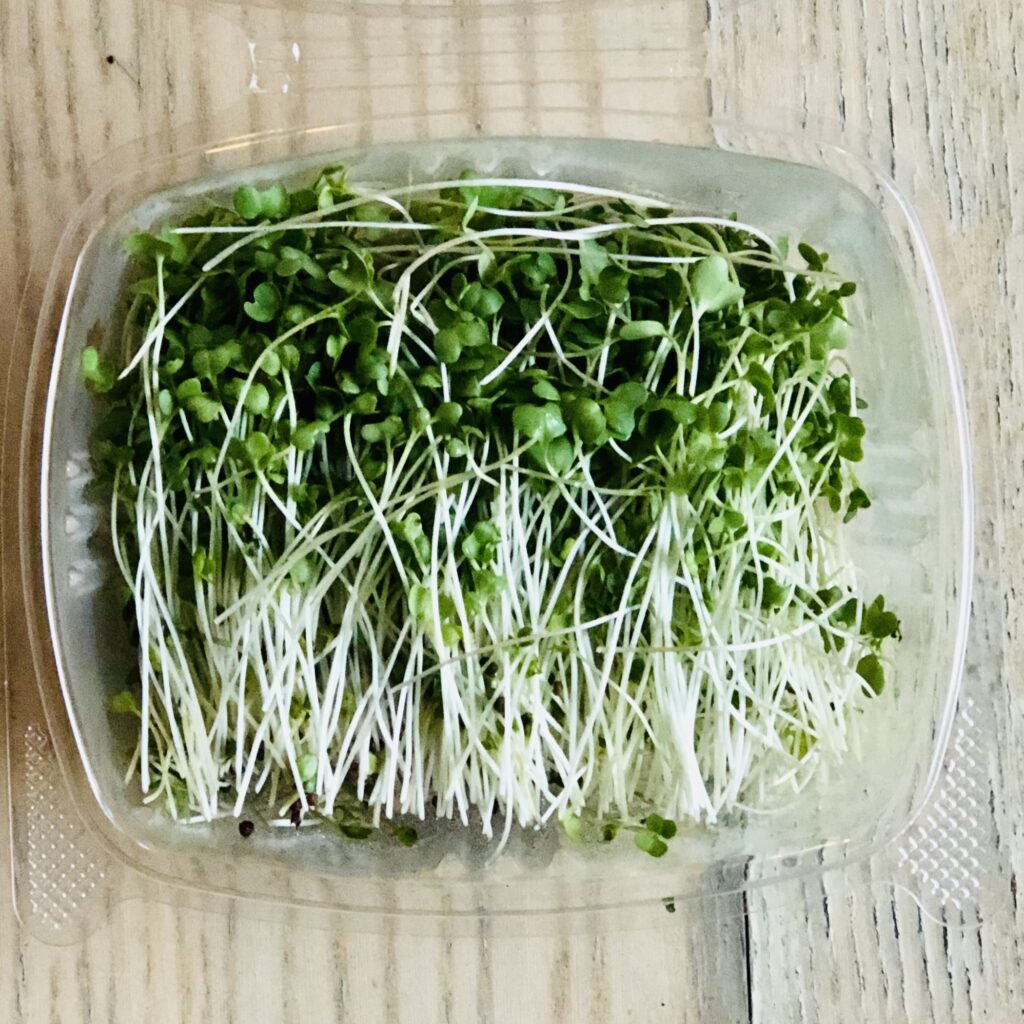
Tip: If you refrigerate wet micro broccoli, the greens will get mushy and totally gross. Be careful to ensure the container does not have condensation–wipe away any moisture.
Can You Freeze Broccoli Microgreens?
Yes, but they will only be palatable if blended into a smoothie or blender juice. Otherwise, previously frozen and defrosted microgreens will be complete mush.
How Do You Grow Broccoli Microgreens?
Growing broccoli microgreens yourself isn’t that hard to do. I wrote a full step by step growing guide for broccoli microgreens.
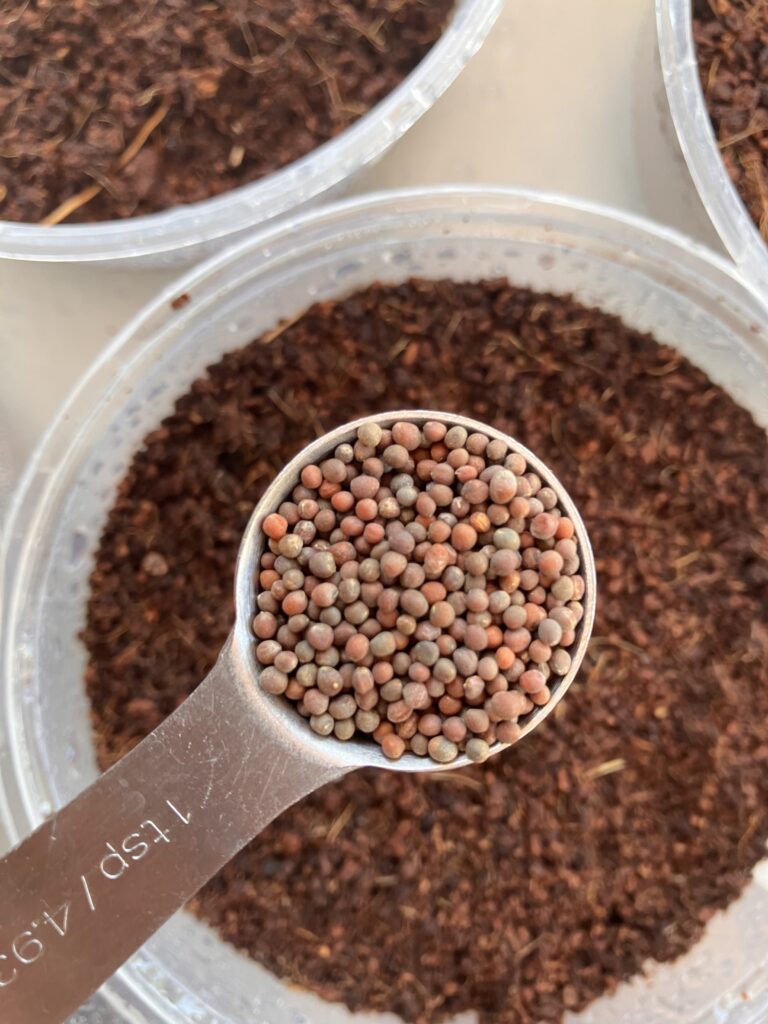
Ideas for Eating Broccoli Microgreens
Broccoli microgreens are fantastic on:
- Sandwiches
- Salads
- Wraps
- Eggs
- Avocado toast

More Microgreens Varieties
Learn All About Arugula Microgreens
Learn All About Sunflower Shoots—Yes, They Are Microgreens!
All About Mustard Microgreens (Intense Mustardy Flavor)
All Your Questions Answered About Radish Microgreens
Why We Should All Eat Broccoli Microgreens
Microgreens Care
3 Ways to Wash Microgreens And Avoid Mushy Microgreens
Growing Microgreens: Should You Grow Them in Your Garden?
White Fuzz on Microgreens: Is It Microgreens Mold?
Growing Microgreens: Should You Grow Them in Your Garden?
Microgreens Care: 2 Reasons You Have Gnats In Your Microgreens


